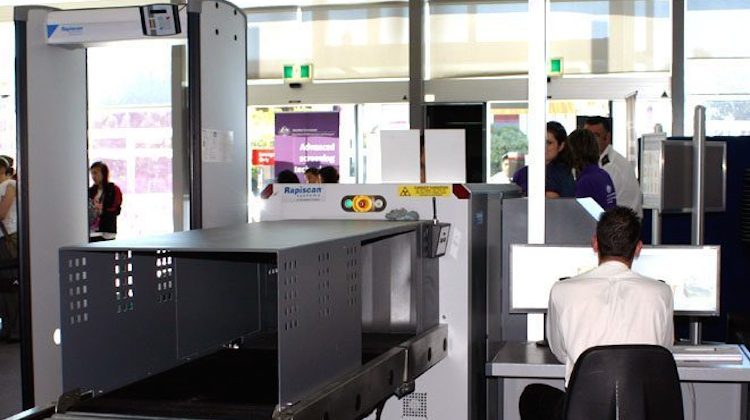Recently introduced new security measures for flights bound for specific countries have added a significant cost and training burden on airlines that will ultimately be borne by the travelling public, the head of the peak Asia Pacific airline industry group says.
Association of Asia Pacific Airlines (AAPA) director general Andrew Herdman says security checks such as the laptop ban earlier this year, which has since been withdrawn, on flights to the United States also affected airlines’ on-time performance as boarding times were extended to accommodate all the at-the-gate screening required.
“I’m afraid too often aviation security is a knee-jerk reaction to some incident,” Herdman told reporters at the AAPA Assembly of Presidents in Taipei on Tuesday.
“The security and security processes always rank amongst the least-pleasant parts of the travel experience according to passengers and this year we have seen a number of initiatives which have further complicated life for passengers going through airport security.
“If you think it is tough now, imagine with another 10 per cent more passengers, another 20 per cent more passengers.”
In place of the much-criticised laptop ban that affected 10 airports in eight countries, the United States announced in June new measures for all international flights into the country. This included enhancing overall passenger screening; conducting heightened screening of personal electronic devices; increasing security protocols around aircraft and in passenger areas; and deploying advanced technology, expanding canine screening, and establishing additional preclearance locations.
Herdman said these measures, as well as similar moves from a few other countries to introduce specific requirements for inbound international flights, required quick action from airlines and airports given the often short timelines involved, which raised costs.
Further, destination-specific security measures resulted in airport processes being segregated, with more checks at the gate and therefore passengers being subjected to double screening.
“Essentially what the US requirements mean you have to provide pre-checkin screening of passengers and that may involve interviewing passengers and that involves training a lot of frontline staff either your own or an appointed agent to carry out such activities,” Herdman explained.
“It has to be done and it is additional cost. Who pays the cost? Ultimately it will have to be the passenger. I don’t think the costs have been estimated but there have been significant.”
“Our concern is people very rarely sit down and work out what the overall costs of security are. If they did, they might not embark on some of these initiatives, they’d question the cost-benefit analysis which is what we do with safety all the time.”
In April, the Australian Government also brought in additional checks for flights from the Middle East.
And more recently it announced on Sunday new rules and additional security measures for airport staff who work airside at the nation’s major airports.
These include random explosive trace screening for the 140,000 Aviation Security Identification Card (ASIC) holders – staff such as baggage handlers, catering workers or engineers, among others – working airside at Australia’s nine major airports.
There will also be more security training and tighter access controls, Minister for Infrastructure and Transport Darren Chester said, with the full rollout of measures to be introduced by January 2019.
The new security arrangements are part of a package of measures that passed through Parliament in March.
Chester said the random explosive trace detection would be conducted either during the day, or when they enter the workplace.
The measures have come in for criticism from the Transport Workers Union, which has described them as “piecemeal”.
By contrast, the Australian Airports Association (AAA) supports the new arrangements, saying they enhance an already strong and robust aviation security network.
Herdman described security measures for airport workers as a combination of background checks and the use of badges to control access on one hand, and the use of security screening on the other hand.
“Different jurisdictions put more emphasis on one or the other,” Herdman said.
“In Europe there is a tendency to what to have screening of staff. In other places there is more background checks and making sure those are up to date in terms of any untoward behaviour or criminal records or whatever and using the badge control system.
“Airports are like mini-cities so when you talk about security of an airport it’s multi-dimensional so you have to use a variety of things and yes things can always be improved. So the Australian initiative is just something on that.”
Herdman said the meeting the International Civil Aviation Organisation (ICAO) standards and guidelines on security could be achieved in a number of different ways.
“You can meet the requirements through a variety of methods but you have to do it in a way that is up to standard,” Herdman said.
“Airports are very secure places. One of the reasons people ship high-value air cargo is air cargo and air travel is highly secure against interference.”











